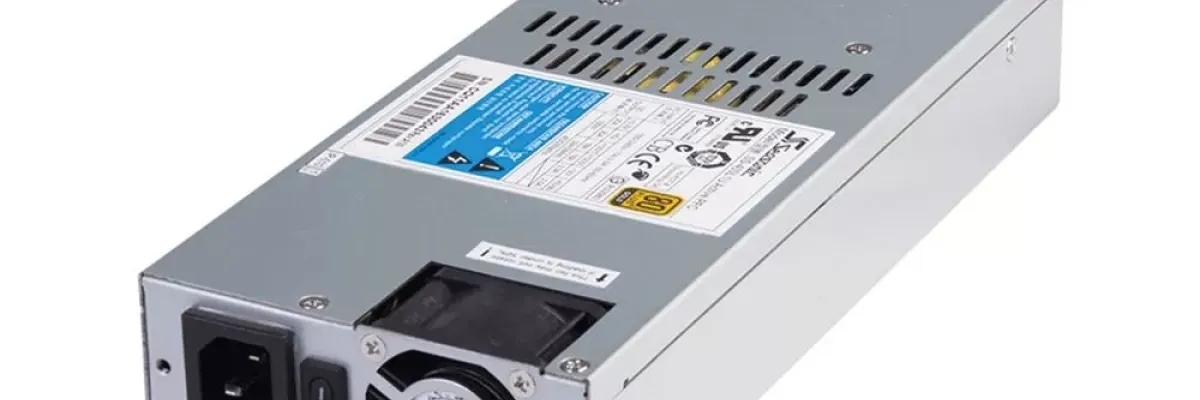
Introduction of power supply
A power supply is a vital component of any electronic device that requires electricity to operate. It is responsible for converting the alternating current (AC) voltage from the wall outlet into the direct current (DC) voltage that is used by the electronic device. This conversion process is necessary because most electronic devices, such as computers, use DC voltage to operate, while the electricity supplied by the wall outlet is AC voltage.
Power supplies come in many different sizes and types, ranging from small, low-power supplies used in portable devices to large, high-power supplies used in industrial equipment. They can be either internal or external, depending on the device they are used in. Internal power supplies are integrated into the device and are not visible, while external power supplies are separate components that plug into the device.
How to avoid overloading your power supply?
Determine your power supply's maximum output capacity:
As I mentioned earlier, you can find the wattage rating of your power supply on its label. This is the maximum amount of power that your power supply can deliver to your components.
Calculate the power usage of your components:
To determine the power consumption of your components, you can use a power supply calculator. There are many available online, and they will help you estimate the amount of power that your components will consume. Alternatively, you can check the power consumption rating of each individual component on its label or on the manufacturer's website.
Ensure your components do not exceed your power supply's capacity:
As a general rule of thumb, you should aim to keep the total power consumption of your components at around 80% of your power supply's maximum output capacity. This will give you some headroom in case your components require more power than usual.
Consider upgrading your power supply:
If you find that your components require more power than your current power supply can handle, you should consider upgrading to a higher wattage power supply. This will ensure that your components have enough power to operate efficiently without overloading the power supply. Additionally, a higher wattage power supply will give you room to upgrade your components in the future.
Avoid overworking your computer:
Running too many resource-intensive programs at once or overclocking your components can put additional strain on your power supply, leading to overload. To avoid overloading your power supply, you should avoid running too many programs at once and avoid overclocking your components. Additionally, you should ensure that your computer is properly cooled, as high temperatures can also put additional strain on your power supply.
What factors should I consider when choosing a server power supply?
Choosing the right power supply for a server is crucial for maintaining the reliable and efficient operation of the system.
Power rating:
The power rating of a server power supply is measured in watts and indicates the maximum amount of power that the power supply can deliver. It's important to choose a power supply with a sufficient wattage rating to support the needs of your server, including the number of processors, hard drives, and other components. A good rule of thumb is to choose a power supply with a wattage rating that is at least 20% higher than the total power consumption of the system.
Efficiency:
Server power supplies are rated for efficiency, with higher efficiency power supplies being more desirable because they waste less power as heat. Higher efficiency power supplies also generate less heat, which can help reduce cooling costs in data centers. Look for a power supply with an 80 PLUS rating or higher, which indicates that it has a minimum efficiency of 80% at different loads.
Form factor:
The form factor of a server power supply refers to its physical size and shape. Server power supplies come in different form factors, and it's essential to choose one that fits the form factor of your server chassis. The most common server power supply form factors are ATX, EPS, and Redundant Power Supplies (RPS).
Modular vs. Non-Modular:
Modular power supplies allow you to detach cables that you don't need, reducing cable clutter and improving airflow inside the server case. However, modular power supplies tend to be more expensive than non-modular power supplies. If you plan to use a lot of drives and other components that require power, a modular power supply is likely to be the better choice.
Reliability:
Choosing a reliable power supply is essential for the long-term operation of your server. Look for power supplies with a high MTBF (mean time between failures) rating, indicating that the power supply is expected to last a long time without failure. Additionally, consider purchasing from reputable brands with a proven track record of reliability.
Redundancy:
Redundant power supplies are desirable for servers that need high availability because they have a backup power supply that can take over in case the primary power supply fails. This ensures that the server remains operational even in the event of a power supply failure.
Conclusion
In conclusion, choosing the right power supply is crucial for ensuring the reliable and efficient operation of electronic devices, including servers. When selecting a power supply, factors such as power rating, efficiency, form factor, modularity, reliability, and redundancy should be considered. It's essential to choose a power supply that meets the power needs of the device while ensuring long-term reliability and efficiency. With proper consideration and selection, a suitable power supply can help ensure optimal performance and prevent potential damage to the device.

Leave a Comment